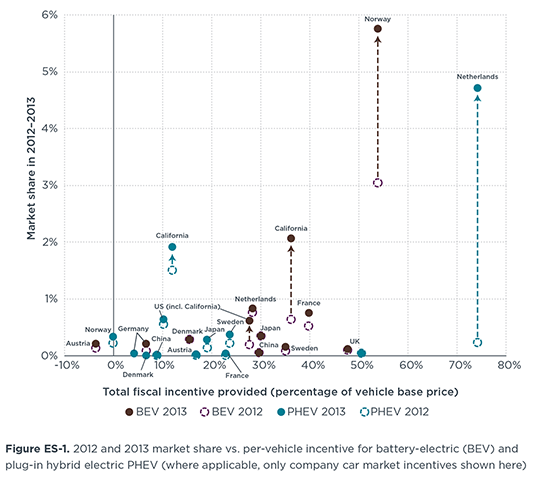White paper
Driving electrification: A global comparison of fiscal policy for electric vehicles
This study is the first to evaluate the response to fiscal incentives that governments in major vehicle markets worldwide have deployed to promote plug-in electric vehicles. It offers a synthesis of wide-ranging sales data, national taxation policy information, and direct electric vehicle purchasing rebates to analyze the link between government policy and electric vehicle sales. It does so by focusing on two representative vehicles, the Renault Zoe battery-electric vehicle (BEV) and the Volvo V60 plug-in hybrid electric vehicle (PHEV).
The paper identifies markets with varying market growth in electric vehicles and quantifies the taxation difference between electric vehicles and their conventional, non-electric counterparts. It incorporates fuel and electricity prices to evaluate the equiva- lent total cost of ownership, and links the level of incentives to the level of electric vehicle market share and sales growth, seeking to draw conclusions about the impact of different incentive programs.
The study demonstrates clearly that tax exemptions and subsidies are playing a key role in spurring electric vehicle markets. Norway and the Netherlands, in particular, are conspicuous examples of the relationship between fiscal incentives and electric vehicle sales
At the same time, the results show that a number of factors in addition to fiscal incentives are influencing development of the market for electric vehicles. California, especially, exemplifies a comprehensive electric-drive strategy that goes beyond fiscal incentives.
Attachments
ICCT_EV-fiscal-incentives_20140506_CN.pdf

